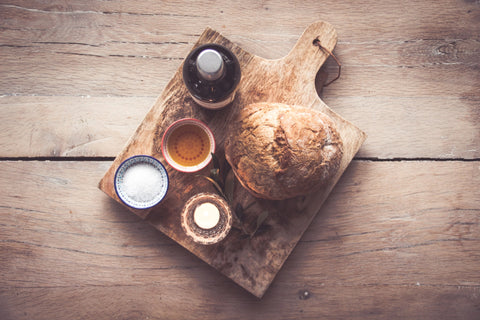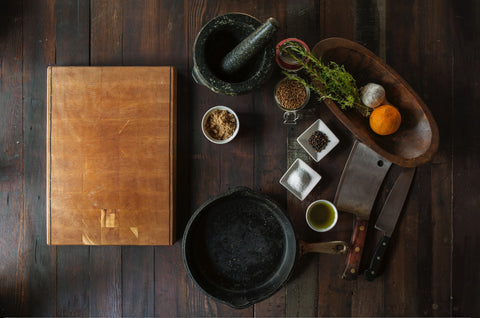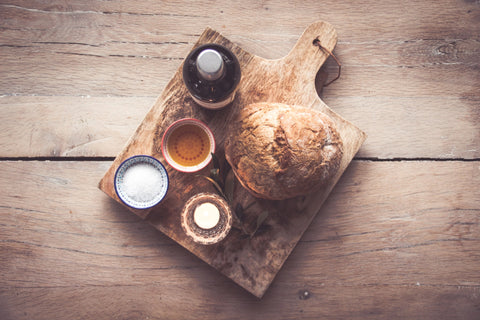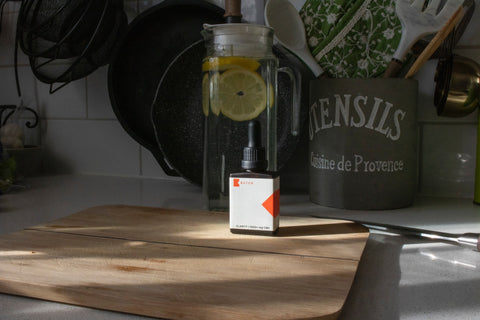The 5 Best Cutting Board Oils (According to Chefs)
Professional chefs know that their workspace is their canvas, and a cutting board is one of the most important tools for their craft. Frequent oiling is essential for a cutting board’s longevity. From natural to synthetic oils, there are plenty of options out there when it comes to taking care of cutting boards – so let’s explore the five best cutting board oils suggested by skilled culinarians today!

Photo by Matthijs Smit on Unsplash
The 5 Arguably BEST Cutting Board Oils (According to Chefs) are:
- Food-grade mineral oil
- Beeswax
- Pure coconut oil
- Carnauba oil
- Raw linseed oil
Choosing the best oil for your cutting boards can be tricky, as many different types are available. From linseed and tung oil to walnut and mineral oil, each one of these effective options will extend your board’s life and appearance. You can even cook up your own concoction by combining two or three of them and create a unique oil potion for your board. So read on below to find out which one is right for you!
1. What are the 5 Best Cutting Board Oils in the Market Today?
Whether you’re a professional chef or someone who enjoys making their own food, having high-quality cutting board oil is the key to keeping your kitchen equipment in top shape. From plant-based to bee wax-infused options, there are plenty of reliable cutting board oils available on the market today. To help narrow down the choices, here are the five best cutting board oils:
- UltraPro Food Grade Mineral Oil,
- Howard Butcher Block Conditioner with Carnauba Wax,
- Wood Butter Cutting Board Wax Conditioner,
- Clark’s Cutting Board Organic Coconut Oil,
- John Taylor Butcher Block oil.
Whichever one you choose for your kitchen needs, these five will keep your cutting board looking brand new!
2. How Do You Protect and Maintain Your Cutting Board with the Right Oil?
Cutting boards are the perfect tool for chopping and preparing food – they provide a clean surface with non-slip stability. But over time, they can start to look dull if they’re not properly cared for. The good news is that keeping your cutting board looking like new is easy – all you need is the right oil!

Photo by Todd Quackenbush on Unsplash
When you choose a mineral oil specifically designed for a cutting board, it softens and seals the wood fibers to protect the board against water damage and dings while also nourishing it to give it a vibrant finish.
Apply a thin coat of oil to both sides of your board with a clean cloth or paper towel, rubbing in the direction of the grain until fully absorbed. Afterward, let it sit for several hours to let the oil completely set in before using your board again. Repeating these simple steps every few weeks (or more frequently if needed) will keep your cutting board in tip-top condition!
3. Which Cutting Board Oils Should Be Used With Caution? And Why?
When choosing the right cutting board oil, your safety should be the top priority!
Walnut oil is a popular choice but should be avoided if you or someone in your household has a nut allergy, as using it on a cutting board could lead to an allergic reaction.
Although very durable and water-resistant, Tung oil can cause allergic reactions in some people, so use it with caution.
Linseed oil is great for preserving cutting boards, but beware – treating the oil with certain chemical compounds or heating can make it toxic! So, if you want to go for linseed oil, go for the raw version.
With a little bit of research before purchasing any oils, you’ll find the perfect fit for extending the life of your beautiful cutting board and keeping it user safe.
4. Which Cutting Board Oils Should Be Avoided? And Why?
Cutting boards are an essential tool in the kitchen, so it’s important to be aware of what agents to avoid when oiling them. While there are some great natural options like coconut, walnut, and avocado oils, the ones such as olive, corn, sesame, soybean, canola, or sunflower should be avoided at all costs. These are generally quite high in fats which can cause the boards to become rancid over time – a total kitchen nightmare!

Photo by Matthijs Smit on Unsplash
Instead, opt for those oil options that protect your boards and keep them in top-notch condition while cooking up all your fabulous culinary creations.
5. What Kind Of Coconut Oil is Best to Use on Cutting Boards?
If you’re looking for a way to care for your cutting board and make it last, fractionated coconut oil could be the solution! Unlike traditional oils, fractionated coconut oil is made by separating the various fatty acids, leaving only some of the lighter compounds in the mixture. The concentration of lighter components makes it easier to apply on wooden surfaces without leaving any greasy residue — meaning your chopping board or butcher block can enjoy a smooth finish and won’t go rancid after a certain timeframe.
It’s easy to clean, too — just wipe it off with a damp cloth, and voila! Your well-oiled cutting board can keep its shine without flavor or smell. Also though it is sourced from coconut, it is actually nut-free.
6. What Are Some Natural Solutions for Keeping Your Wooden Cutting Boards in Great Shape?
Keeping your wooden cutting board in great shape doesn’t have to involve difficult upkeep or harsh chemicals – there are plenty of natural solutions to keep your board looking and smelling its best.

Photo by BATCH by Wisconsin Hemp Scientific on Unsplash
The combination of lemon and salt is an age-old way to disinfect surfaces and rid them of unwanted smells effectively.
For stubborn stains, treat with a sprinkle of baking soda.
For deep cleaning, give your board a thorough cleaning by spraying it with a diluted bleach solution – 1 teaspoon of bleach in 1 quart of water should do. Then swamp it with hot water and finally dry it off.
Lastly, always remember never to soak the wooden cutting board.
With these simple tips, you’ll be sure to keep your kitchen prep station in perfect condition for years to come.
Your cutting board is an important tool in the kitchen, and it’s essential to keep it well-maintained for your safety. Choosing the right oil can make all the difference when it comes to preserving its condition over time – mineral oils are a great choice as they provide protection against water damage while also nourishing the wood fibers. Additionally, there are plenty of natural solutions, such as lemon and salt or baking soda, that you can use to disinfect and get rid of tough stains on wooden surfaces. With these tips, you will be sure to have a clean and safe cutting board for years to come!

